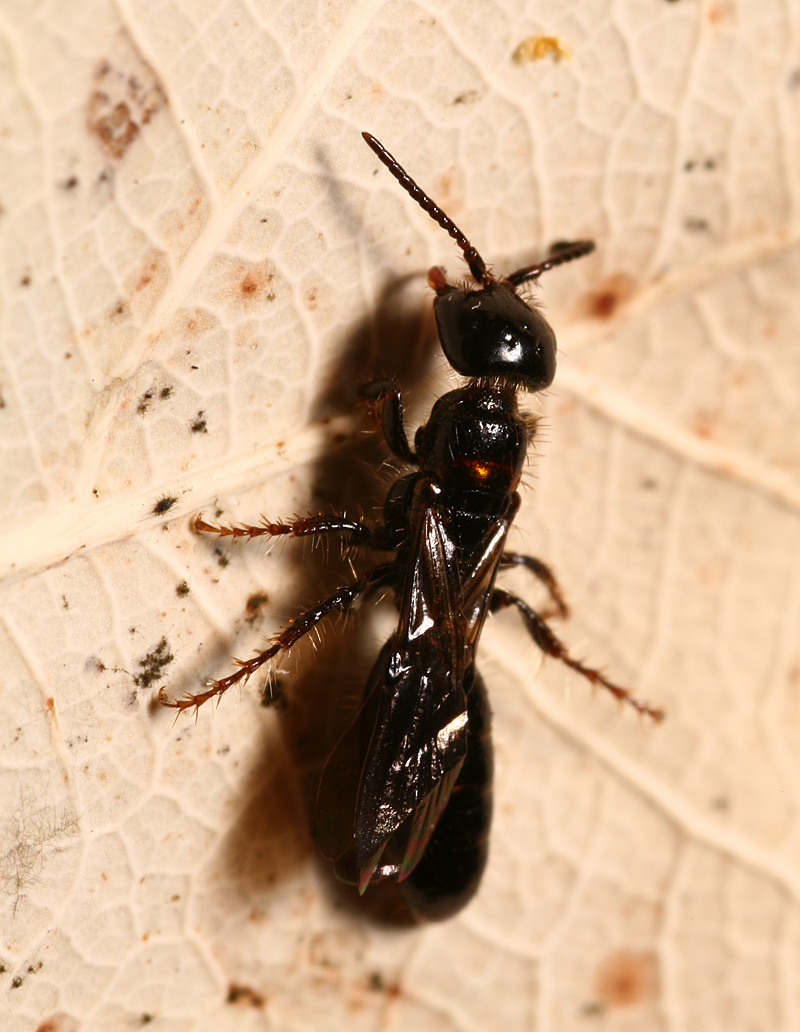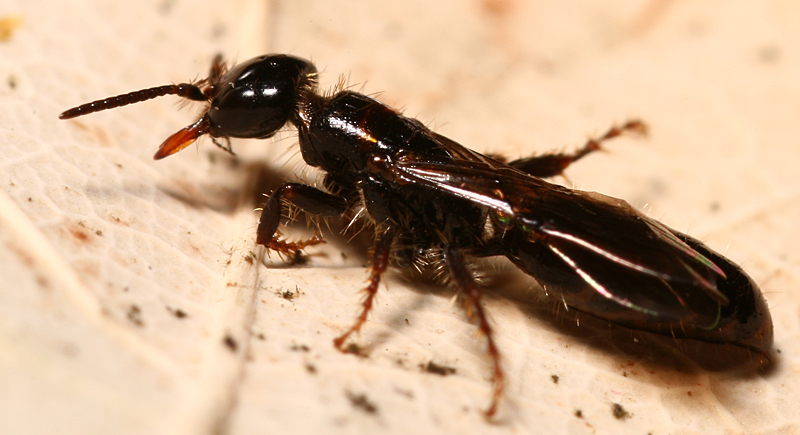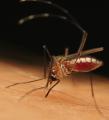Diptera.info :: Identification queries :: Other insects, spiders, etc.
|
Bethylidae wasp?
|
|
| jorgemotalmeida |
Posted on 25-08-2007 23:34
|
|
Member Location: Viseu - PORTUGAL Posts: 9296 Joined: 05.06.06 |
Hi * locality - Silgueiros - Viseu - PORTUGAL * date - 2007.08.25 * size - 7 mm (medium wasp) * habitat - open land * substrate - on Mentha sp. flower This is a male of Bethylidae wasp. Correct? jorgemotalmeida attached the following image:  [192.39Kb] Edited by jorgemotalmeida on 25-08-2007 23:36 |
| jorgemotalmeida |
Posted on 25-08-2007 23:40
|
|
Member Location: Viseu - PORTUGAL Posts: 9296 Joined: 05.06.06 |
another view...
jorgemotalmeida attached the following image:  [191.72Kb] |
| Andrew Whittington |
Posted on 15-09-2007 09:05
|
|
Member Location: Snowdonia Posts: 110 Joined: 30.01.07 |
Yes, it looks like a Bethylid to me .. but isn't it a female. Both males and females can be winged in some species and in the second photo the specimen seems to have a stinger?
Edited by Andrew Whittington on 15-09-2007 09:06 -----o0o----- Andrew E. Whittington https://flyevidence.co.uk/ |
|
|
|
| jorgemotalmeida |
Posted on 15-09-2007 12:46
|
|
Member Location: Viseu - PORTUGAL Posts: 9296 Joined: 05.06.06 |
yes. it is a stinger. According to the delta intkey: "Head. Antennal segments (11?)12 (females), or 13 (males). Antennae geniculate" this drive us to the female wasp... It has clearly LESS THAN 13 segments... so a winged female... Why nobody has sure about Bethylidae for this wasp? It is clear that this CANNOT BE an ant.  What are the other wasps that are very similar to the Bethylidae wasp?  |
| Christian Schmid-Egger |
Posted on 15-09-2007 19:18
|
|
Member Location: Germany, Berlin Posts: 233 Joined: 05.08.05 |
I am not sure, weather it is a Bethylidae (12-13 antennal segments) or a Dryniidae (10 antennal segments), because I count 11 segments. It also may be a small Tiphia species. But I am not so familar with these groups to recognize it. In any case it is not an ant, because ants always have a knot-like petiolus. Regards, Christian |
| jorgemotalmeida |
Posted on 05-11-2007 00:33
|
|
Member Location: Viseu - PORTUGAL Posts: 9296 Joined: 05.06.06 |
Christian Schmid-Egger wrote: In any case it is not an ant, because ants always have a knot-like petiolus. Regards, Christian not always!  there are exceptions. The only thing that we can find in ants is the existence of metapleural gland (there is no *VIRTUALLY* any other animal with that gland) BUT not all ants have it. there are exceptions. The only thing that we can find in ants is the existence of metapleural gland (there is no *VIRTUALLY* any other animal with that gland) BUT not all ants have it.  |
| Christian Schmid-Egger |
Posted on 06-11-2007 19:53
|
|
Member Location: Germany, Berlin Posts: 233 Joined: 05.08.05 |
not always!  there are exceptions. The only thing that we can find in ants is the existence of metapleural gland (there is no *VIRTUALLY* any other animal with that gland) BUT not all ants have it. there are exceptions. The only thing that we can find in ants is the existence of metapleural gland (there is no *VIRTUALLY* any other animal with that gland) BUT not all ants have it.  But these exeptions are really rare??? Even in the world key for Hymenoptera (Goulet & Huber 1993), Formicidae are charaterized as: "Metasoma petiolate, ..segment I usually strongly constricted at each end, forming a true node, but rarely unconstricted posterodorsally (only!!!)", what for me means a half node minimum". In every case, the above mentioned wasp is never an ant, but a Bethylid or something similar; or an Tiphia (I cannot recognize wing venation). Regards, Christian |
| Jump to Forum: |













